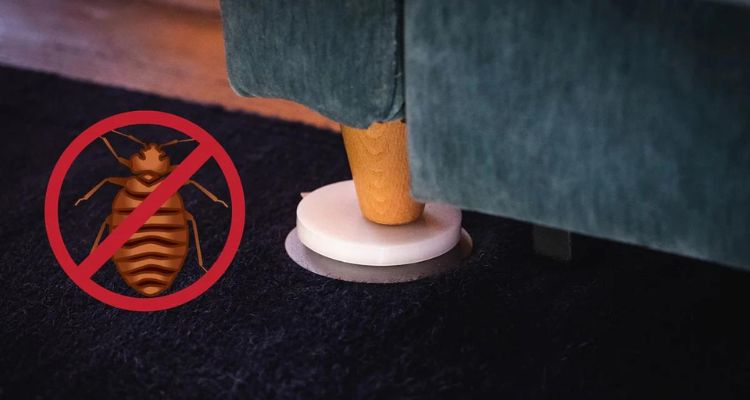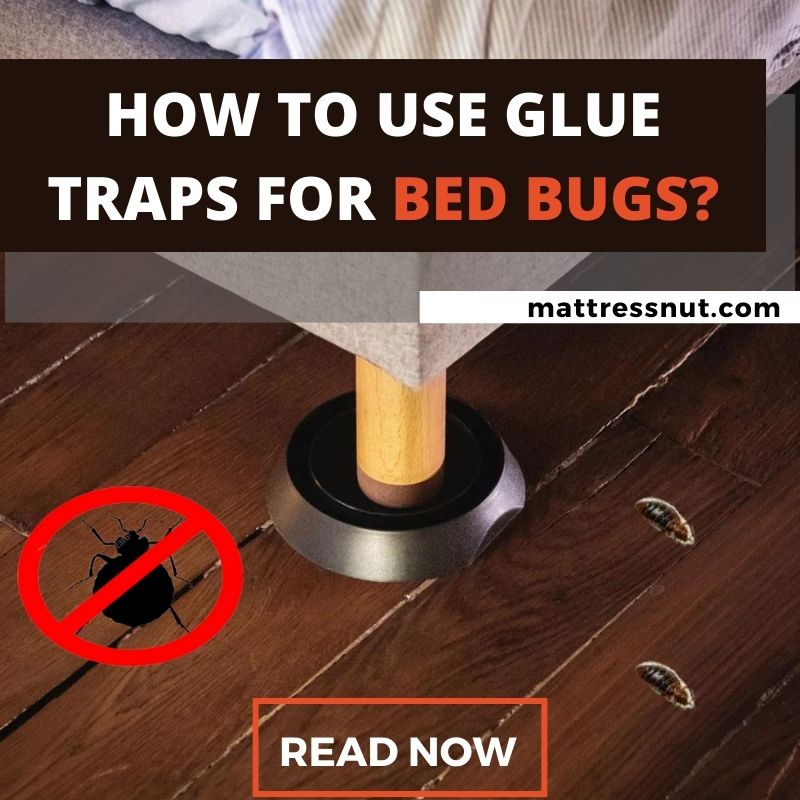Are you tired of bed bugs invading your sleep space? Using glue traps can be an effective way to catch these pesky insects. If you’re in a hurry, here’s what you must do.
First, place the traps near the bed. Focus on areas where bed bugs are likely to hide. These areas include under the mattress, along the baseboards, and around the bed frame.
Next, ensure the traps are flat on the ground and not obstructed by anything. Then, wait for the bed bugs to trap on the adhesive surface. Once the traps have caught bed bugs, dispose of them properly and replace them.
But there are other types of traps that you can use to catch these bugs and get rid of them for good. In this post, we will discuss them in detail, so continue reading till the end and sort out your bed bug problem.
Types of Bed Bug Traps & How They Work?
There are several types to choose from regarding bed bug traps. Each type of trap works differently, and some may be more effective than others. Here are some of the most common types of bed bug traps and how they work:

Bed Bug Interceptors
You can place these small plastic dishes under your bed’s legs. They work by trapping bed bugs as they crawl up the legs of the bed to get to you. Bed bug interceptors are easy to use and are a good way to monitor for bed bugs.
Glue Traps
Glue traps are sticky adhesive pads around the bed or in areas where bed bugs are likely to hide. Bed bugs get stuck to the adhesive surface of the trap, preventing them from reaching you. Glue traps can be a good way to catch bed bugs but may not be effective.
Carbon Dioxide Traps
Carbon dioxide or CO2 traps emit carbon dioxide, mimicking a sleeping person’s breath. Bed bugs are attracted to carbon dioxide and get trapped in the device. These traps can be effective but expensive and require a power source.
Pheromone Traps:
Pheromone traps use chemicals that mimic the scent of bed bugs to attract them. These traps work pretty similarly to glue traps. Once these traps attract the bugs, they become stuck in the adhesive surface. Therefore, pheromone traps are often handy as a monitoring tool to detect the presence of bed bugs.
Do Bed Bug Traps Work?
If you’re dealing with a bed bug infestation, you might wonder if these bug traps effectively eliminate these pests. The answer is yes; bed bug traps can effectively reduce the number of bed bugs in your home.
However, they may not be enough to eliminate an infestation. The effectiveness of bed bug traps depends on the type of trap, the size of the infestation, and how well you use them in conjunction with other bed bug control methods.
Passive Vs. Active Bug Traps
When it comes to bed bug traps, there are active and passive traps. Active bed bug traps use heat, carbon dioxide, or pheromones to attract bed bugs actively.
Passive bed bug traps, such as glue traps, rely on the bed bugs to come to them. Active traps tend to be more effective than passive traps, but both can be useful in detecting and reducing the number of bed bugs in your home.
Are Bugs Attracted To Glue Traps?
Yes, glue traps attract bed bugs because they emit heat and carbon dioxide, both signals indicating the presence of a potential host.
Once they land on the trap, they stick to the adhesive surface, preventing them from moving around. However, glue traps may not eliminate a bed bug infestation. You should use them in combination with other bed bug control methods.
Conclusion
Bed bug traps, including glue traps, can effectively reduce the number of bed bugs in your home. However, they may not be enough to eliminate a bed bug infestation.
Active traps are more effective than passive traps, but both can be useful in detecting and reducing the number of bed bugs in your home. Glue traps attract bed bugs, but they are also capable of climbing on sticky tape.
It’s important to use a combination of bed bug control methods to eliminate these pests from your home effectively. If you are struggling with a bed bug infestation, consider contacting a pest control professional for assistance.
How To Use Glue Traps For Bed Bugs FAQs
Can Bed Bugs Get Stuck On Sticky Traps?
Yes, bed bugs can stick on sticky traps, also known as glue traps. When bed bugs crawl over the adhesive surface of the trap, they become stuck, making it impossible for them to move. But they are ineffective in killing these bugs. Therefore, you must use other traps to kill and eliminate these bugs for good.
How Do You Attract Bed Bugs to One Spot?
There are several ways to attract bed bugs to one spot, including heat, carbon dioxide, or pheromones. Active bed bug traps use these methods to lure bed bugs to a specific area, making detecting and eliminating them easier.
Can Bed Bugs Climb on Sticky Tape?
Bed bugs are capable of climbing smooth surfaces, including sticky tape. However, once they come into contact with the adhesive, they become stuck and unable to move.
It's important to note that while sticky tape may trap some bed bugs, it's not a reliable method for eliminating a bed bug infestation. It's best to use a combination of bed bug control methods to eliminate these pests from your home effectively.

